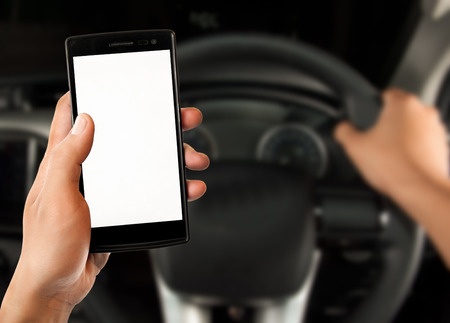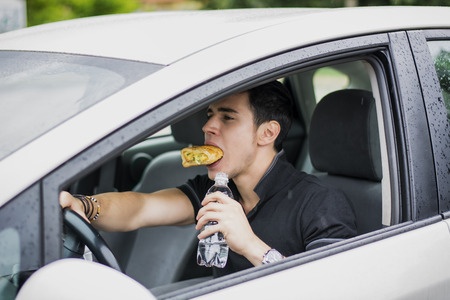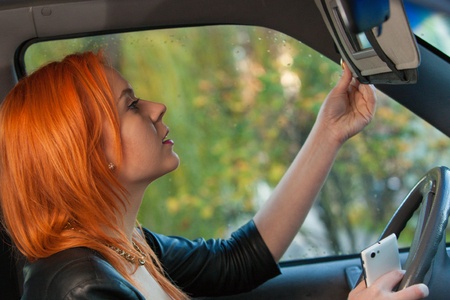

Bellingham Police Department Renews Focus on Distracted Driving
On Friday, December 14 the Bellingham Police Department held a patrol for distracted driving on Bellingham roads between 8 a.m. and 2 p.m. As a result of the patrol, Bellingham police made 43 traffic stops and issued 20 tickets; six tickets were for drivers using their cell phones. Other infractions included drivers applying makeup, eating breakfast, shaving and using an iPad while driving.
(more…)
Read More

Washington State Ranked Second-Worst State to Drive in Nation
According to a list published by financial website WalletHub.com on Wednesday, January 24, 2018; Washington ranked second-worst state to drive in the nation. Hawaii came is as the worst and Texas the best. Now, before we start blaming Canadians or people who don’t know how to use roundabouts or who camp in the left lane, this ranking is about a “positive commute.”
Read More


Governor Jay Inslee Signs Tougher Distracted Driving Law
On Tuesday, May 16 Governor Jay Inslee signed a tougher distracted driving law for Washington State. The new law – aimed at cracking down on hand-held cell phone use while driving – was originally set to go into effect in 2019. To the delight of the safety advocates, Inslee vetoed the delayed start date in favor of a faster implementation in mid-July stating that the law was too important to wait for the provisions to become law.
Read More

Distracted Driving: Commercial Motor Vehicles
Promoting safe operation of commercial motor vehicles (CMVs) and reducing the number and severity of crashes on U.S. roadways is critical to the mission of the Federal Motor Carrier Safety Administration (FMCSA). In 2009, FMSCA released crash data that indicated that 41,059 people were killed in road crashes in 2007 (FMCSA, 2009a). Of these fatalities, 12 percent (4,808) involved large trucks. On the bright side, this represented a net decrease in fatalities, down 7.5 percent from 1998 to 2007, but there are nevertheless issues around distracted driving that are keeping the numbers as high as they are.
Read More

April is National Distracted Driving Awareness Month
About a decade ago, Amanda Clark made the news when she survived a terrible texting and driving accident after running a stop sign and being broadsided by another driver. Somehow, the roof stayed intact and she survived the accident with minor injuries. It seemed like Amanda had learned her lesson, writing in detail about the experience for her senior project at Oakdale High School in 2006. Over time, however, Amanda returned to her old careless ways. One year after her first accident, Clark lost control of her vehicle while texting her roommate. By the time first responders pried her from the car, she hadn’t been breathing for 20 minutes and died the next day. Amanda’s mom tells the story to anyone who will listen in order to increase distracted driving awareness.
Read More

Distracted Driving Study
Distracted driving is defined as doing another activity that takes attention away from driving; it is a known risk factor to increasing the chances of a car accident and was responsible for 17 percent of car crashes in which someone was injured in 2011. Every day, distracted driving car crashes are the cause of 9 deaths and more than 1100 injuries.
There are three main types of driving distractions are visual (taking eyes off the road); manual (taking hands off the steering wheel); and cognitive (mental distraction).
While many activities can cause distracted driving, texting while driving is considered the most dangerous because it combines all three types of distraction. It also takes the driver’s attention away from driving more frequently and for longer periods than other driving distractions. In December 2012, more than 171 billion text messages were sent or received in the US, a number that has surely grown in the following years.
Read More

Distracted Driving: Get the Facts
Every year thousands of drivers are injured and killed in distracted driving related car accidents. Education campaigns that share personal horror stories, facts, and statistics are important to help raise awareness and understanding about the dangers of distracted driving but they have not proven to be the perfect answer.
If you or a family member was injured in a distracted driving car accident you should consider contacting a personal injury lawyer who can help you fight for the compensation you deserve.
Distracted Driving Defined
Distracted driving is defined as any activity or action that could take a person’s attention away from the primary task of driving. Examples of actions that could create distracted driving:
Read More

Current Distracted Driving Laws
Cell Phones are Primary Cause of Distracted Driving
- A driver talking on a cell phone is as impaired as a driver with a .08 blood-alcohol level; the legal limit in most states.
- A driver who is texting is as impaired as a driver with a .16 blood-alcohol level!
- Drivers talking on cell phones have slower reaction times. Tests have shown that drivers talking on cell phones hit the brakes half a second slower in an emergency and miss more than half the visual cues seen by drivers who are giving their full attention to the road.


Teen Drivers and Fatal Car Crashes
It is widely known and acknowledged that teen drivers between the ages of 16 and 19 years of age cause the most crash and traffic violations of any other age group. In fact, car accidents are the leading cause of death for teenagers across the United States. The question is why? There are many factors that play into this fact including not understanding consequences to risky driving, lack of experience, high usage of drugs and alcohol, distractions such as a car full of friends, and cell phone usage.
Primary collision factors in fatal car crashes caused by 16-19 year old drivers:
- Unsafe Speed 35.3%
- Right of Way 20.6%
- Improper Turns 14.8%
- Sign/Signal 8.1%
- Alcohol/Drugs 5.1%
- Passing/Lane Change 4.3%
- Wrong Side of Road 3.1%
- *Distracted driving and other 8.7%
*Distracted driving includes texting and driving which is now known to be six times more dangerous than driving while intoxicated. It has now replaced drinking while driving as the leading cause of car accidents among teenagers.
Teen Drivers Primary Crash Risk Factors
Poor Hazard Detection
It takes time and practice to be able to identify potential hazards on the road. Teen drivers must gain perceptual and information gathering skills over time to be able to identify threats.
Low Risk Perception
Teen drivers have a tendency to underestimate a crash risk in a hazardous situation such as an icy road and overestimate their ability to navigate the hazard.
Risk Taking
Teen drivers tend to be overconfident in their abilities and lack an understanding of consequences to risky behaviors like speeding, tailgating, running red lights, violating traffic signs and signals, making illegal turns, passing dangerously, texting while driving, and failure to yield to pedestrians.
Not Wearing Seat Belts
Teenagers have not gotten the message as clearly as adults; they do not wear seat belts as consistently as older drivers. This choice may have to do with a lack of understanding of consequences.
Lack of Skill
It takes time to master driving and vehicle handling skills and new teen drivers simply haven’t had the time.
Alcohol and Drugs
Teens often engage in partying and drinking or using drugs and some get behind the wheel and drive. Driving under the influence of alcohol and/or drugs is a common cause of serious and sometimes fatal car crashes among teenage drivers. Possibly because of lack of skill, teenagers who drink and drive are at a much higher risk of being involved in a serious car accident than are older drivers with equal concentrations of alcohol in their blood.
Carrying Passengers
When teens drive with passengers in the car the risk of being involved in a fatal car crash increases by three times; the more passengers, the higher the risk. Teen male drivers are particularly at risk with teen male passengers as they may encourage the driver to take unnecessary risks.
Night Driving
Night driving is particularly dangerous for teen drivers: the per mile crash rate is three times higher after 9 p.m. than during the day. Among other factors, this is likely because teen driving involving alcohol or drugs is more likely to occur at night.
If your teenager has been involved in a car crash please don’t fight your insurance company alone. Do not underestimate the ability of an accident attorney to get the job done: the Insurance Research Council found that insurance payouts to clients are 3.5 times higher to those who hired an accident attorney. Call the experienced accident lawyers at Tario & Associates, P.S. to setup your FREE CONSULTATION today!
Read More


Texting and Driving Deemed Six Times More Dangerous than Driving Drunk!
Texting and Driving has been in the news a lot the last few years but despite the media coverage, social campaigns, and changes in law enforcement many people continue to text and drive. This year the National Highway Traffic Safety Administration (NHTSA) determined that driving a vehicle while texting is six times more dangerous than driving while intoxicated and that it has now replaced drinking while driving as the leading cause of car accidents among teenagers. Texting while driving causes over 3,000 deaths and 330,000 injuries every year according to a study by the Harvard Center for Risk Analysis.
Texting and Driving Facts
- One quarter of teenagers admit that they respond to a text message while driving at least once every time they drive while 20 percent admit to sending and receiving multiple messages per trip.
- 47 percent of adults admit to texting while driving and 10 percent admit to sending and receiving multiple messages per trip.
- Reaching for a phone, dialing or texting are a serious distraction to your primary task: driving. These sub-tasks increase the risk of getting into a crash by three times.
- Sending or receiving a text takes a driver’s eyes off the road for an average of 4.6 seconds; while driving at 55 miles per hour that is like driving the length of an entire football field, blind.
- 11 percent of all drivers under the age of 20 who were involved in a fatal car crash were distracted while driving. This age group has the largest proportion of drivers who were distracted while driving.
- For drivers 15-19 years old involved in fatal crashes, 21 percent of the distracted drivers were distracted by their cell phones.
- To date laws against texting while driving are not proving effective: in states with anti-texting and driving laws, fifty-seven percent of teenage boys admitted to texting and driving, compared to 59 percent in states with no texting law.
- By texting and driving you are 23 times more likely to crash your vehicle.
The question is what can we do to stop people from texting and driving? We know that over the years, less people are drinking and driving which can be attributed to public service messages, strict laws and enforcement, and increased social stigma. Cell phone manufacturers could do their part through advertising and developing apps that restrict texts and calls from coming in when it detects the phone is in a moving car.
Lawmakers have been pushing for tougher distracted driving laws including increased fines for talking or texting on a cell phone and stricter measures for repeat offenders. A survey conducted by NHTSA found that 90 percent of drivers support laws that ban texting while driving; 80% support a ban on e-mailing while driving; and almost 75% believe that restrictions should apply to all drivers, not just specific groups such as teens.
If you or a loved one were involved in a car accident, please don’t fight your insurance company alone. Do not underestimate the ability of an accident attorney to get the job done: the Insurance Research Council found that insurance payouts to clients are 3.5 times higher to those who hired an accident attorney. Call the experienced accident lawyers at Tario & Associates, P.S. to setup your FREE CONSULTATION today!
Read More